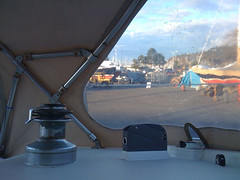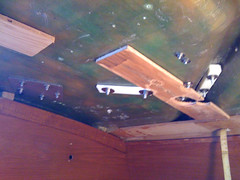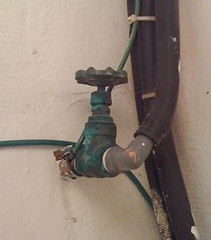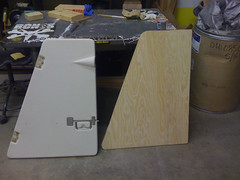First Sail in Forever !
Posted on Mon 13 December 2010 in Destinations - Puget Sound
We left <<The Yard>> and went back in the water on Saturday, back to the slip to tank up with water and then headed out with s/v Palarran to Blake Island. On the trip over there was no wind so we motored and despite a minor engine issue on s/v Palarran, who had to bleed their fuel lines in the middle of Puget Sound, we arrived safely without incident at Bake Island. It was pretty rainy and we were there to go to dinner at a party in Tillicum Village so we didn’t’ explore much of the island. We’ve anchored at Blake previously and never have used the Marina. The first come first serve marina is a tight entrance but well protected. The dock fee is \$.50 a foot and for \$6 a night you can also use the shore power. There are nice shore side toilets and showers and large picnic building with large fireplaces. You need to bring your own wood or but it onsite. We will definitely be back to have a big fire soon!
After our dinner party we enjoyed a windy rainy, rainy, rainy night at the dock which allowed us to find every leak on the boat.
The next morning we holed up, made breakfast and waited for the weather to let up . Around 1pm the wind in the marina was calm enough for us to safely depart and the rain had let up completely. We sailed back in 20+ knots of wind with seas and current all aiding our progress to the north. With a 110% jib alone really twisted off we reached close to 7 knots repeatedly and were averaging 6 knots. The seas weren’t always complimentary to our sailing and we bounced around a little bit. Having not sailed in a year we weren’t used to that and were a little uneasy, but we settled into it and worked the waves when we could and the gusts as well and then things settled down and our confidence returned.
All in all it was a great trip for us and hanging out with CB and Tawn is always a good time!






